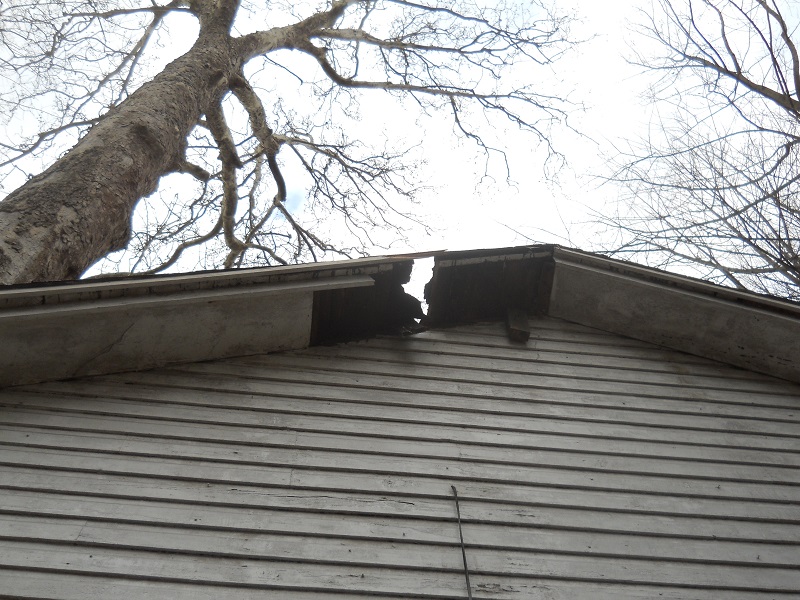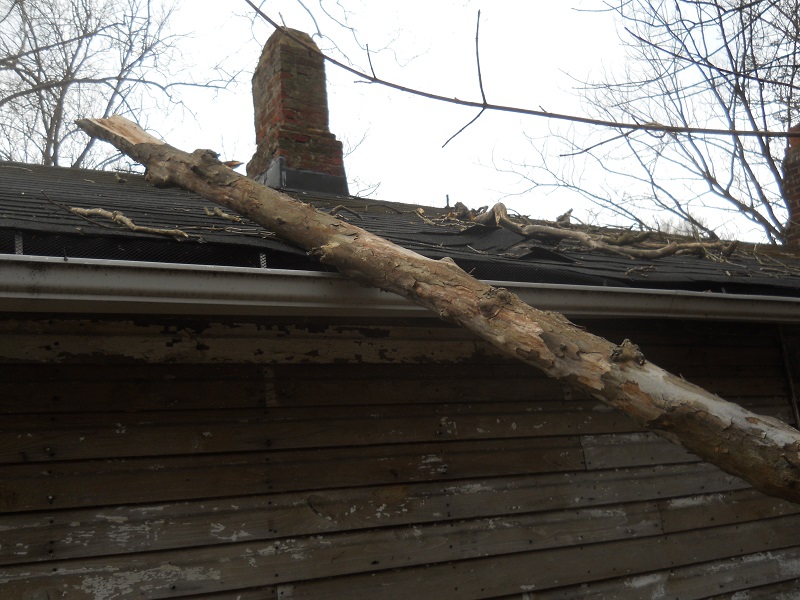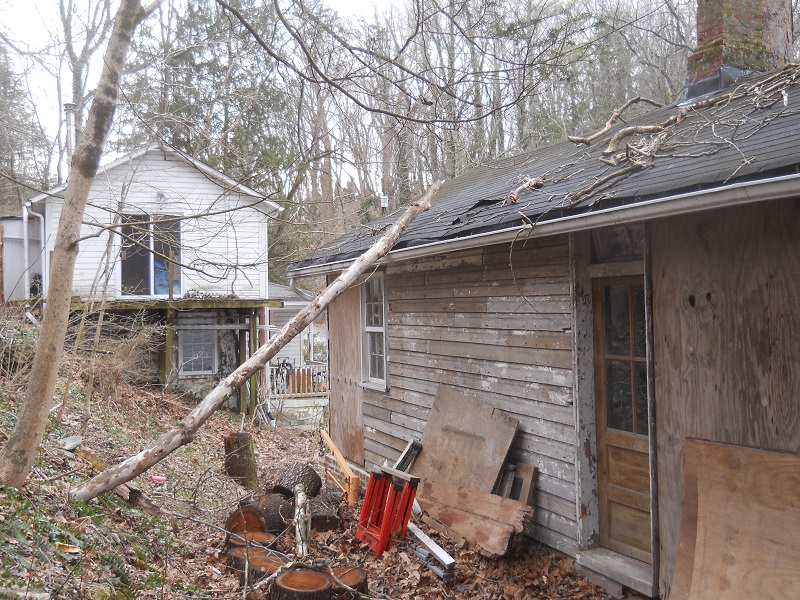Originally posted by Dan Dubeau
View Post
What did you do today?
Collapse
X
-
There is one coming up for auction near me,Bruker S1 Titan.What are the in's and out's of those scanners?Operating costs?Etc.Originally posted by lakeside53 View PostSpent $50K of the company's money on a nice XRF machine. Hoping to get the old one! Last edited by wierdscience; 02-28-2019, 09:16 PM.I just need one more tool,just one!
Last edited by wierdscience; 02-28-2019, 09:16 PM.I just need one more tool,just one!
Comment
-
-
lakeside, won't a micrometer do the same job !
 Thickness measuring for things that you machine it should be a real
Thickness measuring for things that you machine it should be a real  thing to have. I assume it's going to provide some service in your shop, I understand that X-ray measuring is the real use of the machine what will it really be used for.
thing to have. I assume it's going to provide some service in your shop, I understand that X-ray measuring is the real use of the machine what will it really be used for.
TX
Mr fixit for the family
Chris
Comment
-
-
The real use is alloy composition... at work we measure that for precious metals and plating thickness as low as 0.2mm sq areas to a 100th (or more) of a micron. None will tell you the carbon composition in steel though ... lowest element is sodium So I can't tell 1020 from 1040 or 1095.. but I can sure identify 1144, 41xx 43xx etc... AL alloys, different Ti's, Brasses etc.
So I can't tell 1020 from 1040 or 1095.. but I can sure identify 1144, 41xx 43xx etc... AL alloys, different Ti's, Brasses etc.
This one can show up to 20 elements simultaneously. It also measures elements of compounds in solution.
Our prior model was 11 years old. Still works, but at the end of life for the X-ray tube and several other parts. Basically not repairable - manf pretty much refused to maintain or service it any more.
Power requirements are negligible... the PC uses more.Last edited by lakeside53; 02-28-2019, 11:47 PM.
Comment
-
-
The XRF will give what it finds to be the amounts of various elements in the sample. However, unless you are looking specifically to find, or exclude, a specific element, it seem you may or may not get a useful result.
At a previous employer, we sent some materials off for analysis. I am not sure of the process by which the vendor determined the analyis, because all I got was the result. That was basically a list of the elements found, and their proportions. Now, you would suppose that such information might let you identify the alloy, but it ain't quite that simple.
Naturally, if you have a sample of steel, and the results show Chromium nickel and molybdenum. Now, do you really believe the proportions? Because several series of steel have those elements in different proportions, and the series depends on relatively small differences.
The same is true of Aluminum, plus there the temper is an issue, which the XRF does not identify.
We actually got relatively little useful information from having an analysis done, just because the results were not so definitive as to point at one specific alloy. If you want to confirm an alloy, and that alloy has a specific ingredient that is not found in others, then you are fine. If you find that element, and the other elements are found in proportions which are credible, then you probably have identified it. But usually, things are a bit less perfectCNC machines only go through the motions.
Ideas expressed may be mine, or from anyone else in the universe.
Not responsible for clerical errors. Or those made by lay people either.
Number formats and units may be chosen at random depending on what day it is.
I reserve the right to use a number system with any integer base without prior notice.
Generalizations are understood to be "often" true, but not true in every case.
Comment
-
-
There is definitely skill involved in matching the data to the material identification. The stereotype of the junkyard pointing a gun at material and instantly getting an exact match for alloy is a fiction, but the junkyard really doesn't care about "exactness".
The advantage in testing yourself is that you can fine tune the results over several tests to get an accurate result. It also helps to have alloy and material standards you use to calibrate the machine. Our software has many modes, but one will tell me what alloy it thinks it might be, then I shoot a known standard and it gives me the variations and probabilities. Nice...
We had a real world issue... a plating solution (can't disclose what) is tested several time a day and concentration adjusted. Problem was, we never asked it to tell us if it was getting contaminated. In our case, the two primary sources of likely soluble contaminants were iron and copper. You generally don't (but you can) ask an XRF to "tell me everything you see", but if you tell it what you are looking for, it can concentrate on finding those items (important when you are close to the detection limits). In our case, copper level rose to the point of corruption, but we didn't know. Now we do.
For xrf... if you "really" need to know exactly...it's all in the software... Turns a heck of a lot of readings into an end result though statistical analysis... digging believable data out of noise Last edited by lakeside53; 02-28-2019, 11:54 PM.
Last edited by lakeside53; 02-28-2019, 11:54 PM.
Comment
-
-
http://pauleschoen.com/pix/PM08_P76_P54.png
Paul , P S Technology, Inc. and MrTibbs
USA Maryland 21030
Comment
-
-
Seems a bit like using 5 digit accuracy from a calculator when the input data was given to 2 decimal places, but........Originally posted by lakeside53 View PostThere is definitely skill involved in matching the data to the material identification. The stereotype of the junkyard pointing a gun at material and instantly getting an exact match for alloy is a fiction, but the junkyard really doesn't care about "exactness".
The advantage in testing yourself is that you can fine tune the results over several tests to get an accurate result. It also helps to have alloy and material standards you use to calibrate the machine. Our software has many modes, but one will tell me what alloy it thinks it might be, then I shoot a known standard and it gives me the variations and probabilities. Nice...
We had a real world issue... a plating solution (can't disclose what) is tested several time a day and concentration adjusted. Problem was, we never asked it to tell us if it was getting contaminated. In our case, the two primary sources of likely soluble contaminants were iron and copper. You generally don't (but you can) ask an XRF to "tell me everything you see", but if you tell it what you are looking for, it can concentrate on finding those items (important when you are close to the detection limits). In our case, copper level rose to the point of corruption, but we didn't know. Now we do.
For xrf... if you "really" need to know exactly...it's all in the software... Turns a heck of a lot of readings into an end result though statistical analysis... digging believable data out of noise
Totally agree that the best accuracy is likely to com from looking for a specific "no-no" material. That is easy, a binary decision, "Didja find it or not?".
Many others come down to a 10% difference in a material that is already less than 1% of the material.... How accurate can it be, and is the material perfectly well-mixed so the spot you are checking is really representative?
Probably best, even with software, at finding out, for instance, if it is 4000 series steel as-specified, or something else. Might not determine if it is 4130 or 4140, since the machine has an accuracy limit, and the steel has composition tolerances..
At some point a real chemical analysis in needed, but as a confirmation that it is in fact consistent with what it should be, the machine ought to be good. Maybe not so good if you have no idea what the stuff is other than that it is probably steel, and want to be able to label it.
We had no particular idea what the stuff we had tested was, and the analysis we got was really not very definitive. Kinda makes you wonder how the steel you buy is known to be what it is supposed to be........CNC machines only go through the motions.
Ideas expressed may be mine, or from anyone else in the universe.
Not responsible for clerical errors. Or those made by lay people either.
Number formats and units may be chosen at random depending on what day it is.
I reserve the right to use a number system with any integer base without prior notice.
Generalizations are understood to be "often" true, but not true in every case.
Comment
-
-
-
Last Sunday evening some strong winds blew through the area, and I heard a loud bang. I found that some large branches had broken off the big sycamore tree and hit the roof of my adjacent house (used for workshop and storage). Same house that had sustained similar damage last March when a good size locust tree fell, clipping the corner of the roof and also damaging the cap on my truck. Here is what I found when I took a good look Tuesday, but most of the debris is wood and stuff from dismantling the old shed. There is just a piece of wood soffit knocked loose, and the limb that was responsible:




I've contacted the tree expert who removed the big cherry tree (logs are visible above), and trimmed some large limbs from the sycamore. But apparently there were some dead or weak branches higher up. I'm hoping he can go up there and check the rest of the tree and maybe trim the ends off the top. He also should be able to repair the roof. Another contractor gave me a price of $2450 for the repair of the corner on the other side. That seemed rather high. But a neighbor needed a new chimney cap and re-pointing of some bricks, and got an estimate of $6500! He got other estimates of $1200. Prices seem to depend on how busy or how hungry someone is.http://pauleschoen.com/pix/PM08_P76_P54.png
Paul , P S Technology, Inc. and MrTibbs
USA Maryland 21030
Comment
-
-
Cheers Paul. You're not the only one. Saved me a Google.Originally posted by PStechPaul View PostNot being familiar with XRF (X Ray Fluorescence) machines
I dunno. It might help for scrapbinium, mysteralloy and chinesium, where you're not even sure it counts as steel!Originally posted by J Tiers View PostMaybe not so good if you have no idea what the stuff is other than that it is probably steel, and want to be able to label it.
They look lovely....but you lost everyone when paired the with Brussel sprouts!Originally posted by JRouche View PostBut I made pork chops? Something we can all do. XRF??
Comment
-
-
Since I put the saw on rollers so it could be moved that wasn’t unexpected, so now I either lock the casters or push it up against something solid, like my tool box if I’m in that corner.Originally posted by J Tiers View PostThat saw moving around as in the video would drive me crazy. I like the machine to be steady.
The saw cuts about as fast as my Atlas H/V bandsaw does, in other words, about 1/3 as fast as I would like it to.
My plan, and reasoning for the saw was to have a somewhat portable, decent capacity throat, vertical bandsaw to cut flat metals for my shop. I understood going in it would not be as good as a dedicated vertical metal cutting saw, however for an total cost of $250 or so, I’m well pleased.
I met my goals, it cuts metal and is movable in my small shop.
Sent from my iPad using Tapatalk
Comment
-
.png)





Comment